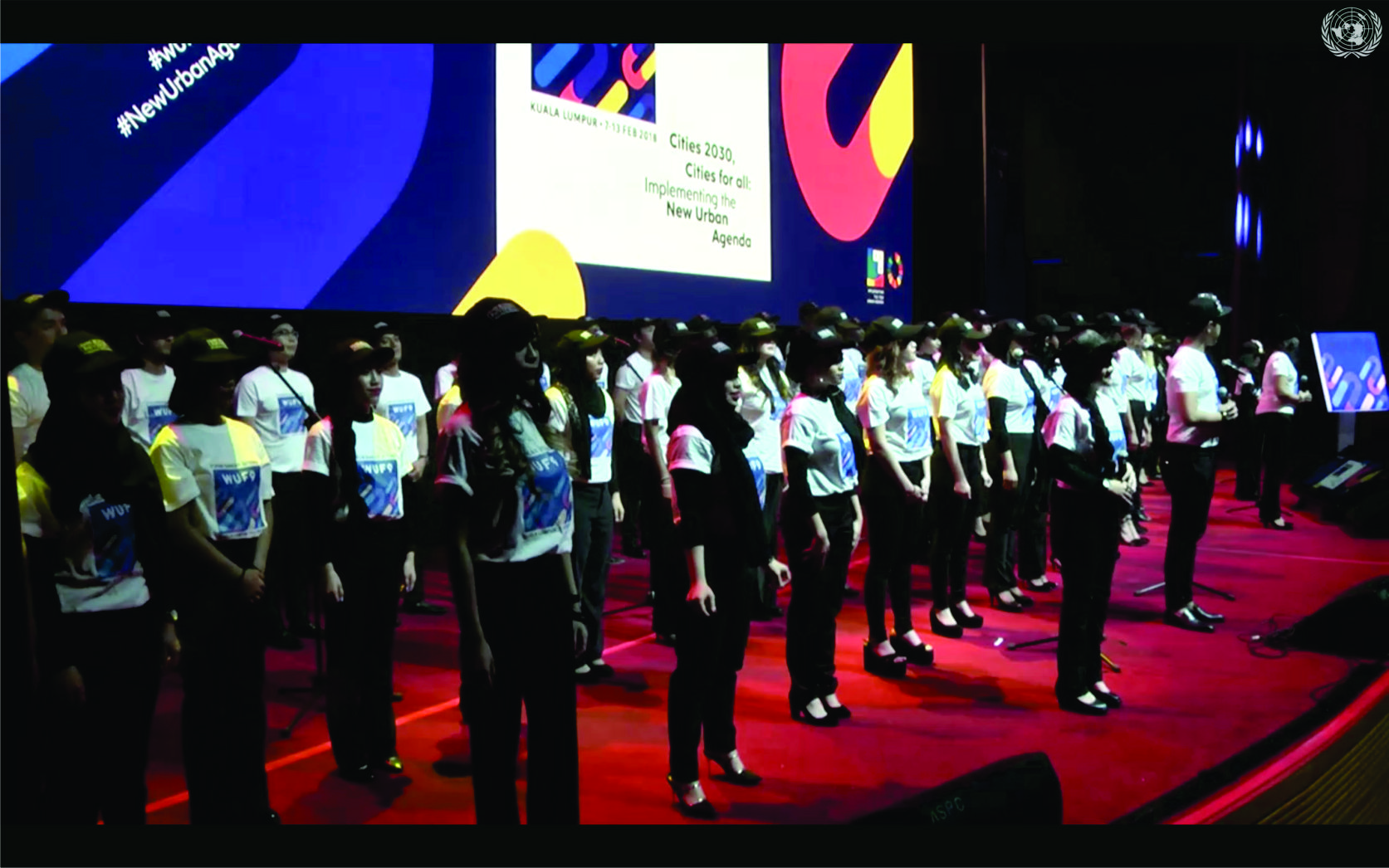The third day of the United Nations World Urban Forum 9 (WUF9) placed much emphasis on youth and migration involvement for implementing the global plan called the New Urban Agenda (NUA). Art displays adorned the halls and exhibit spaces; children throughout the world must have been asked (aka, trained) to envision the future of 21st century megacities. In their cardboard megacities, the children used air-filled balloons to represent “drone” centers of surveillance for example. Crayon art on walls displayed stick-figure-ish people of all colors holding hands around Earth. No less than fifteen breakout sessions focused on the role of youth, migration, and sustainable cities.
The objectives for the youth-centered meetings at WUF9 included “Foster[ing] and encourage[ing] the establishment of inter-generational dialogue between various stakeholders with the aim of promoting sustainable urban development,” to “provide an online platform for global youth to exchange experiences and solutions,” and to “provide an evidence-base for the implementation, monitoring, and review of the New Urban Agenda.”
According to the Secretary General of the UN’s Envoy on Youth,  Donovan Gutierres, there are about 1.8 Billion young people between the ages of 10 and 24 today — the largest youth population ever. As such, the youth create unprecedented potential for change in economic and social “progress.” The Children and Youth Assembly at WUF9 is guided by the connected objectives of the New Urban Agenda (NUA) and the UN 2030 Agenda for Sustainable Development ambitions. Youth are absolutely necessary and vital to the United Nations and the UN’s goal of urbanizing the world to promote inclusivity, equity, resiliency, and sustainability.
Donovan Gutierres, there are about 1.8 Billion young people between the ages of 10 and 24 today — the largest youth population ever. As such, the youth create unprecedented potential for change in economic and social “progress.” The Children and Youth Assembly at WUF9 is guided by the connected objectives of the New Urban Agenda (NUA) and the UN 2030 Agenda for Sustainable Development ambitions. Youth are absolutely necessary and vital to the United Nations and the UN’s goal of urbanizing the world to promote inclusivity, equity, resiliency, and sustainability.
During a session entitled, “One Planet Cities” a speaker from Denmark proudly explained how important youth are to the NUA. He said, “we’ve been educating our children for the last 25 years on anthropogenic global warming” and since many are now adults “they are actively implementing policies to combat Climate Change.”
Another WUF9 session, “Durable Solutions in Displacement Crisis” was primarily about migrants coming to any country due to natural disasters, war, or anthropogenic Climate Change. The speakers discussed the impact on communities whose local services are neither prepared for nor have the funding for thousands to hundreds of thousands of displaced people flooding into their countries. In some countries and cultures due to ageing populations (like the decreasing numbers of farmers around the globe), talks of “replacement migration” took place.
Whether getting the youth involved or encouraging migration, funding is vital to implement the NUA. And as such, a big conversation topic for the no less than twenty lectures we attended touched on where the money would come from. No doubt, the “developed” countries like the USA. Who knows what happened in the closed sessions for VIP’s from various countries who required special badges and heavy security. Who knows whose money was discussed…
While in Kuala Lumpur, a Malaysian city surrounded by tropical trees and plants, it is impossible not to notice the hundreds of high rise, mixed-use space apartment-style buildings under construction and strategically placed next to the subway system and bus terminals. Thirty, forty stories high. Residents say single family homes are becoming a thing of the past. Kuala Lumpur has a growing population of about 9 million – youth, ageing, and very diverse. A perfect location for WUF9.

Liberals want to brainwash all children They want them to think what they want them to, nothing else. Children are not to think on there own.
Liberal Marxism has been following the teachings of the Frankfurt School for a long time. Logic is no longer taught in the UK. Look out for Common Purpose, an Educational Charity set up to identify and influence to morrows leaders to “Lead beyond authority”. That is in their Mission Statement.
This is scarier than 1984. That was just a book. This is real. Maybe we’re stumbling to the New World Order unintentionally, or it could be that it was inevitable. Like a herd running straight off a cliff. I sure hope that the SS is guarding President Trump really well!